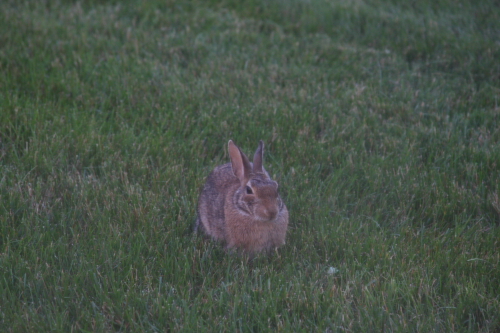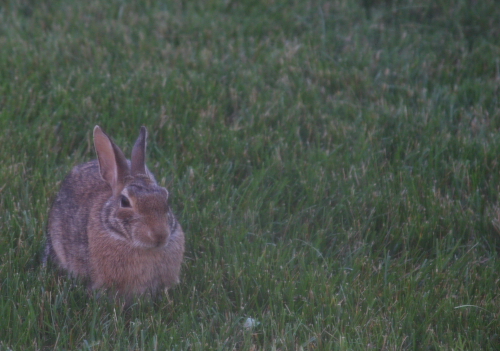

For this post I've taken the same picture posted it twice, the first is the original and the second is a cropped version of the same picture. This is to show the idea of positioning your subject in the picture. The first picture is ok, but the second picture is better because it follows a design rule called the rule of thirds. More over it follows it twice. I recently read a few chapters of a book (someday I'll finish it) which talked about where to put your subjects in a picture. The design rule of thirds says that things are more intersting and can convey information differently by moving subjects off the center. The book stated that one thing that you want to do when possible is put something at the cross of one of the thirds across and one of the thirds vertically. When taking pictures of people try to put the eyes of your subject and one and where posible an intersection of both thirds. this will draw a viewers attention and cause them to look at your picture for longer....which is a good thing. I'm trying to show that idea above using the fluffy bunny.
The settings:
Camera: Canon EOS 40D
Lens: Canon EF 28-135mm f/3.5-5.6 IS
Exposure: 0.02 sec (1/50)
Aperture: f/5.6
Focal Length: 135 mm
ISO Speed: 640
About the Lens setting:
Lens: Canon EF 28-135mm f/3.5-5.6 IS
First is the brand - useful if you like how the lens does and you want to find it.
Next is EF - This is what kind of camera can use this lens, if your camera can use cannon ef lenses then this one would work on it.
Then there is the 28-135mm - I don't know a great way to explain what I understand this to mean other than to realate it to a fixed lens 35mm film camera that most people have used at some point in there lives. It also affects how big the subject looks in your picture....or zoom. This is a mid range lens, I know this because I know that a 35mm camera works well at mid range, it can do ok close up or far away from your subject, but is best halfway in between. The zoom allows more flexability to how close I need to be to my subject to how much of the picture I want them to take up.
f/3.5-5.6 - This is the focal range or how much behind or infront of your subject that is in focus when your subject is in focus. Lower numbers mean less is in focus, this can give you the really nice blurs you see a lot in my pictures. Also to note is that the lower focal point needs less light since a smaller portion of the picture needs to be in focus. This is one of the reasons that fixed focal length lenses more more expensive, they are more flexable. A lens with a fixed focal length doesn't mean you can't set the number higher for taking pictures where your subject takes up most of the picture or landscape type photo's. With my lens the focal length minimum goes up as you zoom in taking away the flexability of how close to my subject I have to be. This is especually true in lower light. The range (28-135mm) and focal length of a lens are the two biggest factors when buying most lenses, though this may not be the case for specialty lenses.
The last bit about this lens is the IS - IS stands for image stablization. With this lens, being at mid range and having a variable focal range the image stablization is extreamly nice to have. It makes a huge difference as to weither I can hold the camera still enough in less than ideal conditions in order to get the shot. IS seems to be less important on shorter range lenses since you are closer to your subject anyway and more important with longer range lenses. I certainly don't want to carry a tripod with me everywhere I go.



No comments:
Post a Comment